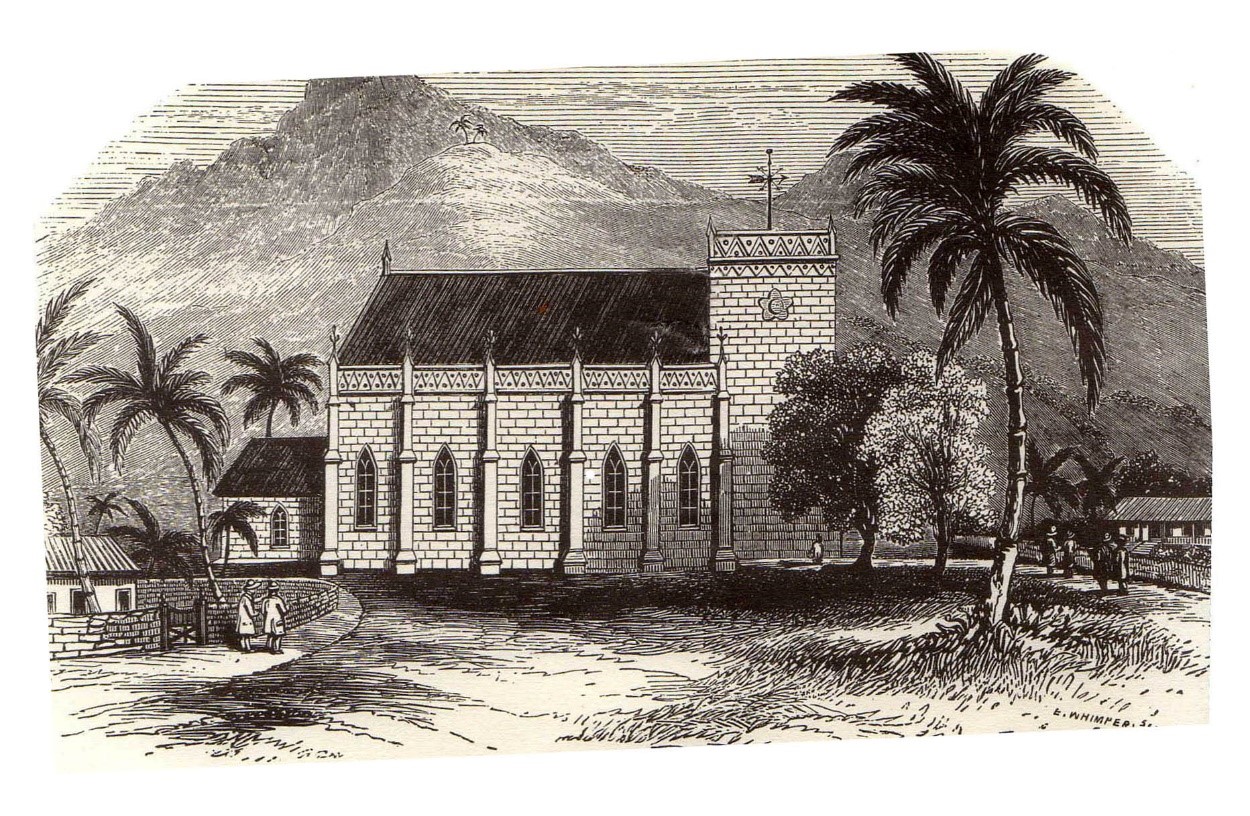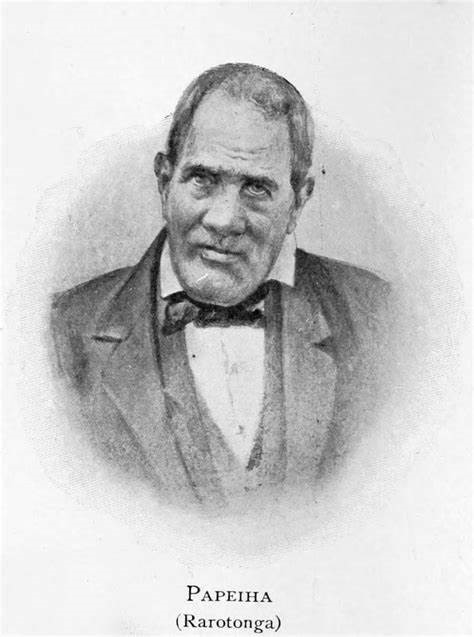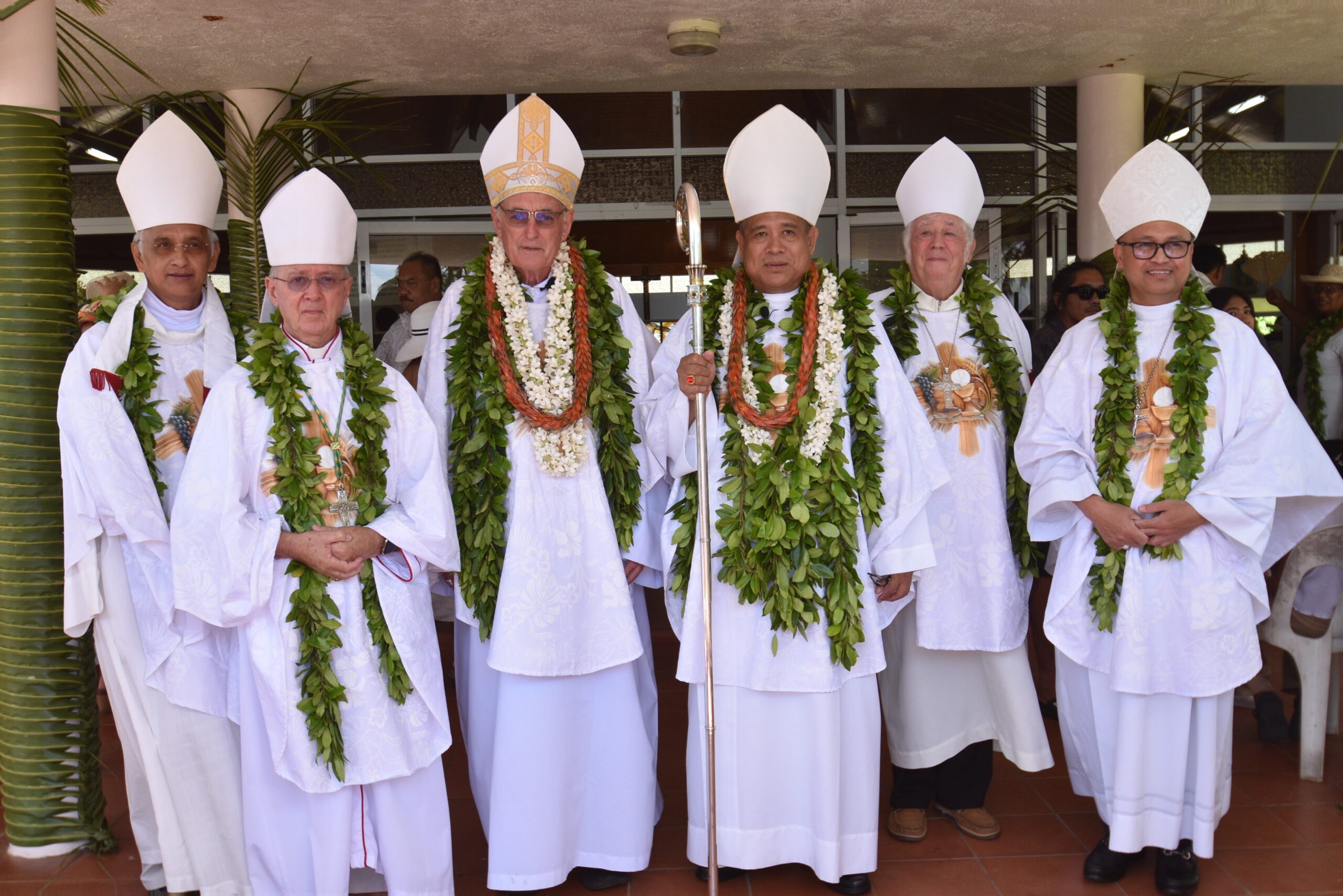‘The Spirit of God … will never die’
Saturday 29 July 2023 | Written by Supplied | Published in Church Talk, Features

The Avarua Church as built during the time of Aaron Buzacott in 1853. SOURCE: “Mission Life in the Islands of the Pacific” Edited by Rev. J.P. Sunderland and Rev. A Buzacott, B.A., John Snow and Co., London, England, 1866. 23072842
Historian and author Howard Henry has been fascinated by the birth of Christianity in the Cook Islands for many years. In a weekly series, Henry chronicles the arrival of Christianity to the Cook Islands and its role in building the nation. In this article, he talks about the new Church and Mission laws.
When Papehia first stayed on Aitutaki after 26 October 1821, and then resided on Rarotonga after 25 July 1823, the method in which he organised all aspects of the Christian community, on both islands, was basically the same.
A similar situation applied to all other “Native Teachers” who had been placed on Atiu, Mitiaro and Mauke as well. In later years, when European missionaries took up various positions on Rarotonga and Aitutaki, they also applied the same style of approach to that of Papehia and the early “Native Teachers”.
These early “Gospel Pioneers” had all undergone several years of theological training on Raiatea under the direction and supervision of various European missionaries who had originally come from England. So the curriculum these missionaries taught was based very much on the laws and regulations that existed in England during this time.
So all “Native Teachers” were educated and taught how to establish and then consolidate the Christian faith in whatever Mission Station they were later posted. Their method of doing this was all basically the same.
These early “Native Teachers” came from islands such as Tahiti, Raiatea, Bora Bora and various other islands in that vicinity. The “social structure” on each of those islands was very similar to what the “Native Teachers” discovered when they landed on Aitutaki, Rarotonga and adjacent islands.
In each case, the Ariki was the “Chief of the Tribe”. He had a designated district of land and a number of Mataiapo, or sub-chiefs, directly below him. The Mataiapo in turn each had a number of sub-chiefs below them known as Rangatira. And below Rangatira was the rest of the population which made up the various community members of the tribe.
When Papehia, and other “Native Teachers”, first landed to take up their Mission Station posts, they did not attempt to disrupt or re-organise the social structure which existed within each given tribe at the time.
But rather, they took advantage of that social structure as a means to create the frame-work through which the Christian faith could be firmly established and then consolidated within the various island communities.
As far as Papehia was concerned, the most important person in the community was the Ariki. And so it was to that person that he first directed his attention and sphere of influence.
Once an Ariki had indicated his support for the arrival of the Christian faith, then Papehia was in a position to influence all those Mataiapo who were below him. Through this Ariki, Papehia was also in a position to influence not only the Rangatira, but also the rest of the people within this tribe as well.
So by taking advantage of the social structure that existed within each tribe before the arrival of the Gospel, Papehia was then able to influence either directly, or indirectly, other members of any given tribe, to also support the arrival of the Christian faith to their respective communities.
The critical person in this conversion process was the Ariki. He had the power and authority to determine what went on within his tribal community. This Ariki was indeed the “Man in Charge”. And his word was the law which existed within his given tribe. And so it was the Ariki that Papehia and other “Native Teachers” first sought endorsement to enable the Christian faith to arrive at their district of tribal jurisdiction.
The most significant aspect of the pre-Christian social structure, that had no place in the Christian community, was the “Ta’unga”. This person, or persons, had no role to play with regard to Christianity. So the Ta’unga was looked upon by Papehia, and the other “Native Teachers”, as being both irrelevant and redundant.
So almost all of these Ta’unga consistently rejected the Gospel. They rejected Christianity. And they refused to change their “Religious Allegiance” on the basis that the Christian movement had no place for them because they were surplus to Christianity community requirements.
So many Ta’unga eventually went to their graves in the years that followed, still refusing to discard their “Ta’unga status” in order to then embrace the Christian faith. This was because these Ta’unga did not want to be made redundant within the tribe where they had initially held a very significant place of importance and prestige.
The Ta’unga has often been referred to as a “witch doctor” or a “tribal magic-man” in terms of pre-Christian way-of-life. However, such references are both unfair and inaccurate.
The Ta’unga was a very significant person within any given tribe. Each Ta’unga was highly respected, and very much feared, in the belief that these men had so much power and influence over the day-to-day lives of all those who lived in their respective tribal communities.
Each Ariki, and all sub-chiefs below them, had various Ta’unga connected to each and every one of them. In general terms, each Ariki could have several Ta’unga according to the number he saw fit.
The Ta’unga were actually the “knowledge-men of the tribe”. They were the custodians of tribal information. Their minds were the “books of the people”. So a Ta’unga was accorded a very high status because of the knowledge and tribal history that each of them possessed.
Those Ta’unga, connected to any Ariki, or any other tribal leader, each had a different field of expertise and historical knowledge in relation to their respective tribe. That is why they were accorded such a high tribal status.
However, Christianity had no place for a Ta’unga. They were redundant. They were to be discarded. No wonder so many Ta’unga went to their graves in later years, still refusing to embrace the Christian faith, because within that same Christian faith … there was simply no place for them.
Once Papehia had landed on Rarotonga and a significant number of people had changed their “Religious Allegiance” to that of the Christian faith, Papehia was then able to start “imposing” a number of “Church Laws” in regard to how these new “Religious Converts” were to live in all aspects of their day-today lives.
There was no debate or discussion within the Christian Community concerning the introduction of these new “Church Laws”. The local population simply had no say in the matter.
These new “Church Laws” came into existence because Papehia said that was the case. And so everyone within the Christian Community were compelled to abide by these “Church Laws” because they were directives that came directly from Papehia himself. So new recruits to the Christian faith had to abide by these new “Church Laws” simply because they had no choice.
One of the first “Church Laws” that Papehia introduced on Aitutaki, and then later on Rarotonga, was that all Christian men had to get a hair-cut. No more long hair. All Christian men must have short hair.
Second, no more loin-cloths. No Christian man was to wear a loin-cloth. Instead, a local bark material was used to create a wrap-around that was fastened around the waist and reached down to touch the knees.
All women had to have their “private parts” covered up at all times. No more nudity or part nudity. That was not the Christian way.
And so the first aspects of the “Christian Dress Code” had now been put in place for both men and women.
All Christians had to live in the Christian Village and so in close proximity to the Church. They were then expected to attend various Church related activities each and everyday because that was their duty to do so.
No more ‘ongi (hongi?) or the rubbing noses as a form of greeting. That practice was “banned” as being most un-Christian like. Any Christian man caught doing a ‘ongi would be charged with an offence under the “Church Laws” as created by Papehia. And punishment for such an offence was indeed harsh.
No more tattoos. While those new Christians with existing tattoos could still be included within the Christian Community. It was now an offence under the “Church Laws” for any Christian to receive a new tattoo. To do so would result in very severe punishment.
No more fighting, killing or domestic violence. There was no place in the Christian Community for that kind of behaviour as a result of what was included in the “Church Laws”.
At the personal direction of Papehia, each Ariki was told to appoint an eminent person from within his own tribe to be his District Judge. It would then be up to that person to preside over all cases where an offence had apparently occurred that was in breach of any of the “Church Laws” which Papehia had previously proclaimed.
Papehia, in conjunction with the local Ariki, would then select suitable men from within the Christian Community to be designated as local policemen. There was no limit to how many policemen that could be appointed. And so it was these men who were tasked with the responsibility to ensure that everyone in the Christian Community abided by all the “Church Laws” which Papehia had declared to be in place.
If anyone broke any of these “Church Laws”, then it was up to the appointed policemen to take that person to the local court where he would then be answerable to the District Judge, as appointed by Papehia and the local Ariki, for any apparent offence, or offences, he may have committed.
There were several other “Church Laws” that Papehia introduced by way proclamation. But those mentioned above are simply a few examples.

The Avarua Church as built during the time of Aaron Buzacott in 1853. SOURCE: “Mission Life in the Islands of the Pacific” Edited by Rev. J.P. Sunderland and Rev. A Buzacott, B.A., John Snow and Co., London, England, 1866. 23072842
During these early years of Christianity Consolidation, all laws and regulations were put in place by way of proclamation from Papehia. They were “his laws”. He was the sole judge of what these “Church Laws” would be. Those in the Christian Community had no say or influence regarding their introduction. Being part of the Christian Community, these people had no choice but to abide by the new “Church Laws” as prescribed by Papehia as to what those “Church Laws” would be.
And so right from day one, Papehia was the most influential person within the Christian community that surrounded him. He was more influential than any Ariki. Papehia was indeed the “Big Chief” of all those Christians who lived within the Christian village under his jurisdiction.
This was an identical situation to other “Native Teachers” who had been placed on various other islands. They had also adopted the same level of influence, “and control”, within their respective Christian communities that Papehia had done.
Then the European missionaries arrived.
Their standing of influence and domination within the Christian community was even more pronounced than what Papehia’s standing had ever been. And so these European missionaries influenced and controlled their respective Christian communities in what ever way they thought it should be. Their “word” was indeed the “Law of the Land”.
These European missionaries achieved so much community respect that their “word” was never challenged. Their directives were never questioned. Members of the various Christian communities simply followed what a European Missionary may determine because that was the “Christian way”. That was indicative of how much “respect” members of the Christian community had for the European Missionary who was living amongst them.
But then came the “Second Wave” of new “Christian Laws” on Rarotonga. And these were those laws introduced by Reverend John Williams. However, the Missionary took a completely different approach to Papehia to finally get these new laws accepted by the Christian community.
Rev Williams first landed at Rarotonga on 6 May 1827 where he remained in residence for almost eleven months. A short time after he had landed, the Missionary then called a meeting of various Ariki and other tribal leaders. Rev Williams then explained about each new law he was proposing and what the appropriate punishment would be to any person who broke any of these laws.
In each case, a new law would not come into existence until there had been total consensus reached by all those in attendance. There were several meetings conducted on Rarotonga for this purpose. Once all the new laws had been agreed by way of meeting process, then these “Mission Laws” came into force as being in addition to those “Church Laws” which Papehia had previously proclaimed.
Rev Williams and Rev Charles Pitman, then put into writing various copies of the “Mission Laws” that had been agreed upon during the public meeting process.
When suitable shipping was available, copies of those new “Mission Laws” were then sent to “Native Teachers” on Aitutaki, Atiu, Mitiaro and Mauke. Also sent was a direction from Rev Williams, that these new “Mission Laws” had to be introduced to the Christian community on each of these islands to complement the various “Church Laws” that each “Native Teacher” had already put in place.
For the tribes and people of all the islands who embraced the Christian faith during these early years, this period of time resulted in a “major revolution” for them with regard to their way-of-life and the standard of living they had when compared how they had been living during the pre-Christian era.
The “spirituality” that Christianity created in the minds and hearts of many people, led them to feel grateful and content in the belief that the Lord was looking after and caring for them all in a most loving sort of way.
So the Christian faith really did bring a whole new way-of-life, a whole new set of day-to-day rules and regulations. These changes enabled the new Christian converts to live in a more satisfied sort of existence.
Those people living within their respective Christian communities therefore embraced the concept that God was a Spirit. And that “The Spirit of God” was forever present, with each and every one of them, for every single day of their lives.
They also believed that “The Spirit of God … will never fade.”
“The Spirit of God … will never die.”
References
John Williams: “A Narrative of Missionary Enterprises in the South Sea Islands”. Published by John Snow and Co., London, England, 1837.
“Maretu’s Narrative of Cook Islands History”. Translated by Marjorie Crocombe, University of Papua New Guinea, December 1974.
Howard Henry: “Christianity created a Nation”. Sovereign Pacific Publishing Company, Rarotonga, Cook Islands, 2021.









































